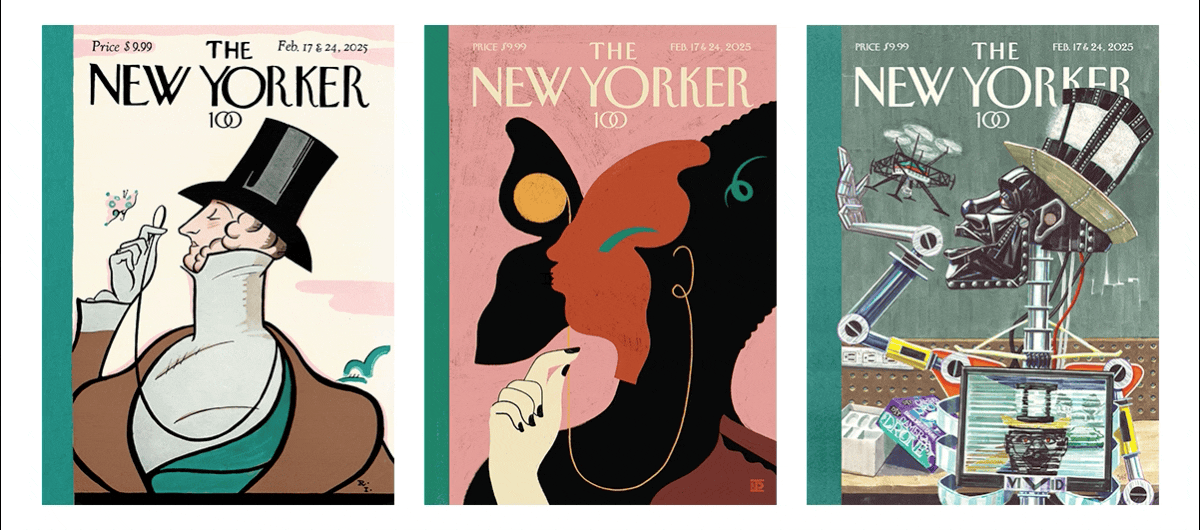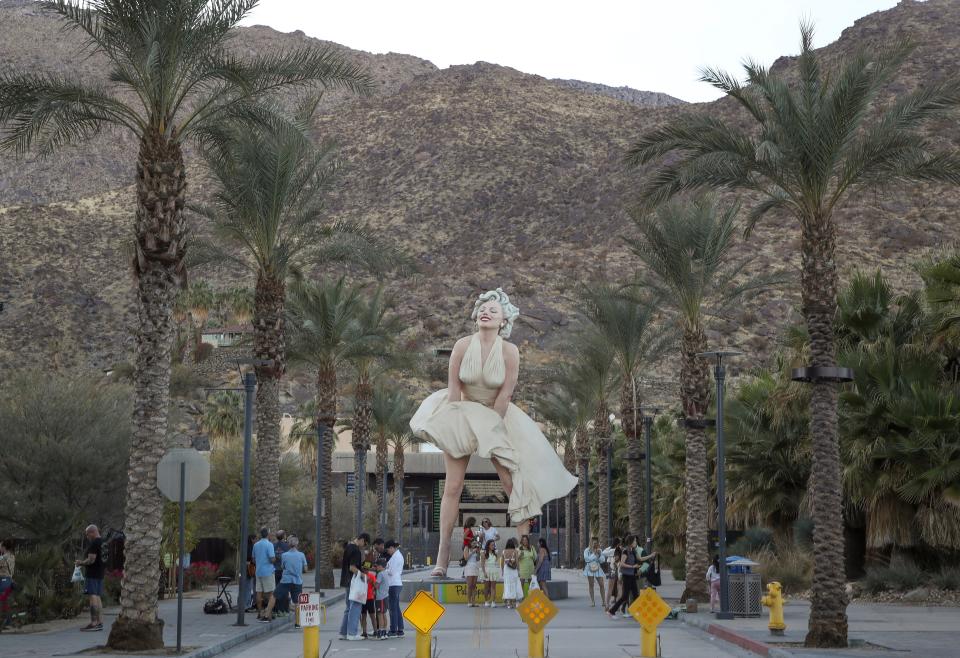When The New Yorker first arrived on newsstands, a hundred years ago this week, it was hardly an instant sensation. Not only were the first issues of modest distinction and sales; Harold Ross, its founding editor, nearly lost the whole flimsy enterprise in an all-night poker game.
Born in Aspen, Colorado, the son of a silver miner and a schoolteacher, Ross was a restless character—a rawboned, gap-toothed young man out of the pages of Mark Twain or Bret Harte. Starting when he ran away from home, at the age of fourteen, he worked at a long string of newspapers—from Sacramento to Panama—and, during the First World War, served his country in Europe as a uniformed editor for Stars & Stripes. Just before the Armistice, Ross met a reporter named Jane Grant, who eventually agreed to marry him despite regarding him as “the homeliest man I’d ever met.”
Ross arrived in Jazz Age Manhattan as yet another out-of-towner with an inchoate sense of ambition. He and Grant settled in Hell’s Kitchen, not far from the piers on the Hudson. One idea that occurred to them was to start a paper filled with shipping news. Another was to publish a line of paperback books. Or maybe they’d start some sort of humor magazine. Maybe that!
The 100th Anniversary Issue
Subscribers get full access. Read the issue »
In the meantime, in March, 1924, Ross joined the editorial staff of a lighthearted weekly called Judge. He and Grant, who was working at the Times, passed many nights at a regular card game on the third floor of the Algonquin Hotel, which came to be known as the Thanatopsis Literary and Inside Straight Club. Not everyone at the table was penniless. Grant encouraged Ross to buttonhole Raoul Fleischmann, who was the heir to a baking fortune yet bored with his lot. Ross first mentioned his shipping-news idea, but no amount of yeast would get Fleischmann to rise to that proposal. After hearing Ross’s notion of a metropolitan weekly, a “comic paper,” though, he ran the numbers—the economy was booming, the postal rates were cheap—and handed over twenty-five thousand dollars.
In the coming weeks, Ross, Grant, and their circle entertained a raft of names for their fledgling creation—Manhattan, New York Weekly, New York Life, Truth, Our Town—before another acquaintance, the Broadway press agent John Toohey, came up with The New Yorker. (Horace Greeley had published a weekly called The New-Yorker from 1834 to 1841, but no one seemed to mind.) At home, Ross and Grant looked for inspiration by riffling through piles of magazines both defunct and funct: Gleason’s, The Smart Set, The American Mercury, Harper’s Weekly. They admired the comic tone of Puck and Punch. They were wary of imitating Vanity Fair, which was publishing Djuna Barnes and Aldous Huxley: too highbrow.
In a prospectus for the magazine which Ross distributed to potential advertisers, he promised “gaiety, wit and satire.” The problem was that the early issues delivered precious little of this. It is the rare publication that starts off with an immediate sense of focus. (One such is The New York Review of Books, whose first issue appeared in February, 1963, during a prolonged newspaper strike; its table of contents—Norman Mailer, Robert Lowell, Elizabeth Hardwick, Mary McCarthy, Irving Howe, Dwight Macdonald, F. W. Dupee, Philip Rahv, W. H. Auden—featured what seemed like the entire roster of the so-called New York Intellectuals in pugnacious conversation.) Ross, in search of an editorial identity, a “formula,” as he called it, was flailing.
The first issues of The New Yorker did have a signature look: the illustrator Rea Irvin provided a typeface for the logo and the story titles which remains distinctive; for the début issue, Irvin’s top-hatted Regency-era fop inspecting a butterfly appeared on the cover—and he still does, in varying forms, for anniversary issues. But the rest was largely hollow. The most substantial contribution to the inaugural issue was “Maestrissimo!,” a one-and-a-quarter-page-long piece of puffery about Giulio Gatti-Casazza, the impresario of the Metropolitan Opera. “I think we have nothing to fear,” Frank Crowninshield, the founder of Vanity Fair, declared.
“We were not proud of our first issues of The New Yorker,” Grant admitted in a memoir that she published in 1968. “We had hoped it would be an immediate triumph as well as a literary one.” It was neither. “Failure hung all about us.” At newsstands across town, heaps of unsold copies shivered in the winter chill. The fifteen-cent cover price tempted almost no one. Ross and Grant briefly considered spending a hundred dollars to buy up copies and plump their circulation statistics, but abandoned the plan as too expensive. Ross implored Dorothy Parker to come to the office and write something. Parker replied that she had dropped by, but “somebody was using the pencil.”
It was a painful beginning—and quite nearly fatal. Not long after the launch, Ross sat down at the poker table and, in a single drunken session, found himself in the hole for twenty thousand dollars—a fortune. “We were disgraced,” Grant wrote. “I could think of nothing left for us to do but commit suicide.” Happily, she reports, with time “a calmer course was decided upon.”
Fleischmann went to lunch with Ross and a couple of others at the Princeton Club, where they discussed suspending publication for the summer, the better to avoid the months when ads were typically thin. It all might have ended there. Then Fleischmann, after attending a particularly high-spirited wedding, regained his confidence and wheedled an additional investment from his family. The constancy paid off. The New Yorker’s editorial luck changed. Ross sent the journalist Marquis James to Dayton, Tennessee, to cover the Scopes trial. His elegant dispatch was a distinct departure from the jokey writing that had previously filled the magazine. In November, Ross had his first newsstand hit, Ellin Mackay’s fizzy social investigation, “Why We Go to Cabarets—A Post-Debutante Explains.” Sales spiked. The New Yorker was in business.
E. B. White, who began contributing pieces that first year and joined the staff in 1927, noted that Ross had started the magazine “more in contempt of what was being published than with any notion of how to improve it.” He was making it up as he went along. But now, week by week, The New Yorker was expanding its self-definition. Ross liked to advertise the gaps in his knowledge—“Who is Willa Cather?”—but had the sense to fill them by hiring a Bryn Mawr graduate named Katharine Sergeant Angell, who, a few years later, married White. She helped bring a serious literary dimension to the magazine, publishing some of the best poets of the day and eventually encouraging Mary McCarthy, Vladimir Nabokov, John Cheever, John Updike, and many others to send short fiction.
What Ross, a worldly man, continued to resist at times was the world. Particularly the world’s woes and its complexities. In 1929, the Depression began to consume the country. At its depths, a third of the city’s workforce was unemployed. And yet the magazine at the time generally remained distant from politics. “Let’s let the other magazines be important,” Ross said. “ ‘Important,’ ” for Ross, his biographer Thomas Kunkel writes, “was a euphemism for ‘dull.’ ” What led Ross, a veteran of the First World War, to open the aperture of his magazine to a wider view of human experience was the Second World War. The pieces arrived in profusion: Mollie Panter-Downes on the Blitz. Janet Flanner’s Profiles of Hitler and Marshal Pétain. A. J. Liebling on the liberation of France. John Hersey’s account of Lieutenant John F. Kennedy’s heroism in the South Pacific. In the aftermath of the fighting came Rebecca West at the war-crimes trials in Nuremberg and Hersey’s masterpiece, “Hiroshima.”
Ross, who subsisted on a diet of overwork and nicotine, gradually handed over more and more responsibility to his deputy, William Shawn. By the time Ross died, in 1951, and Shawn succeeded him, the fullness of the magazine—its blend of humor, art, deep reporting, criticism, poetry, and fiction, as well as its devotion to, among other values, accuracy and clarity—had come into focus. The New Yorker was no longer an improvisation so slight that it could be lost in a poker game. A continuity of purpose and practice had been established. Rachel Carson’s “Silent Spring,” from the summer of 1962, served as inspiration for writers as various as John McPhee, Bill McKibben, and Elizabeth Kolbert. That November, James Baldwin published “Letter from a Region in My Mind,” which would be a legible presence in so much of the writing about race in the decades to come. Hannah Arendt’s 1963 report from Adolf Eichmann’s trial in Jerusalem launched moral and historical debates that continue to this day. Just as comic notables from that past, including Charles Addams and James Thurber, inspired Roz Chast and Calvin Trillin, Flanner and Liebling inspired every foreign correspondent who followed them. When the Vietnam era brought a fog of governmental dissembling and a mounting body count, the magazine, with writers such as Jonathan Schell and Frances FitzGerald, was equipped to play a role as clear-eyed witness.
#Celebrating #Yorkers #Hundredth #Anniversary








Leave a Reply